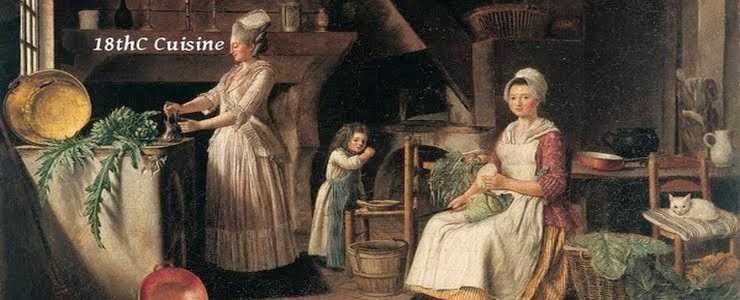1. Take cider vinegar and add pepper and other spices to excite fermentation.
Nouvelle Maison Rustic 1702 and 1777 p.85.
2.
Capsicum3.
Piment de CayenneRough translation of the third citation:
«Guinea pepper is also called coral gardens, Spanish pepper, pepper of India,
called in England the whole fruit chillies ground pepper, Cayenne. Generally
cultivated in America, in Europe, Spain, Hungary & South of France.
This pepper is used as seasoning in vinegar. It is also used to flavor vinegar
and really to make bitter [tangy] instead of sour. In England there are fruit
pepper pods heart shaped.
Cayenne pepper also known as cayenne pepper, Cayenne chillies, whole fruit red pepper Americans, Cayenne pepper, another species of Capsicum.
In America, use of a special process to grind the pepper red fruit is mixed with
wheat flour after putting in earthen pots of alternate layers of fruit and flour
that is placed in a drying oven. After it dries, the flour [pepper pot] or
Cayenne is prepared by pulverizing the biscuit that is made with wheat flour and seed.
Chemical analysis was carried out by L M Braconnot in 1817.»
These peppers were growing in America, the Caribbean and the South of France and Basque country since at least 1600-ish.
 Strawberry Spinach [Chenopodium capitatum, also known as strawberry blite] (available from Heirloom Seeds) turned out to not only be a spectacular plant, but a delightful eat, served here with one of my tiny green climbing melons(vert grimpant seeds available from Baker Creek) after mascerating with a touch of sugar on a bit of yogurt.
Strawberry Spinach [Chenopodium capitatum, also known as strawberry blite] (available from Heirloom Seeds) turned out to not only be a spectacular plant, but a delightful eat, served here with one of my tiny green climbing melons(vert grimpant seeds available from Baker Creek) after mascerating with a touch of sugar on a bit of yogurt.






















